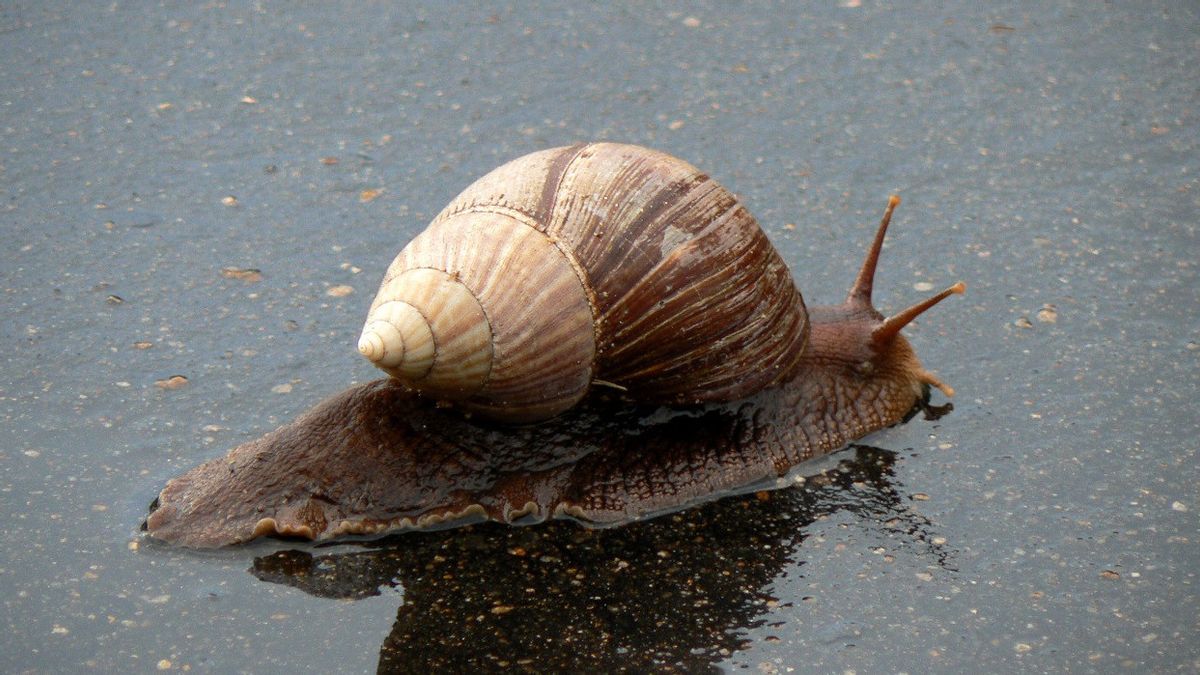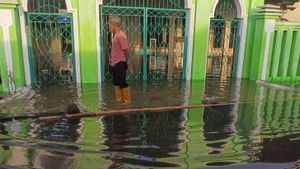JAKARTA - Patches of giant African land snails suddenly appeared on the Gulf Coast of Florida, United States, local officials said.
Not only do the animals threaten to destroy a wide variety of plants and trees, they also pose a risk of transmitting a rare type of meningitis to humans.
This native East African snail is one of the most destructive in the world, eating at least 500 types of plants, tree bark and even paint and plaster in homes, according to the US Department of Agriculture.
The invasion could destroy Florida's agriculture and natural areas, as the snails cause extensive damage to tropical and subtropical environments.
Not only that, this snail is listed as one of the top 100 invasive species in the world.
Gastropods, whose shells can grow to the size of a human fist, also often carry a parasite known as 'rat lungworm' which can transmit a type of meningitis. Symptoms of this disease include muscle pain, headache, stiff neck, fever and vomiting.
More than 1,000 creatures have been collected on the outskirts of Tampa in New Port Richey in Pasco County. Everything tested last Thursday did not carry the rat lungworm parasite, Greg Hodges, assistant director of the state's Division of Plant Industry, said at a briefing.
State officials first detected the infestation on June 23. They stressed the importance of not touching or swallowing snails to prevent infection.

"Most importantly, don't eat it. It's not a snail to grease with butter and oil and garlic. It's not something you want to touch. It's not something you want to eat," said Florida Department of Agriculture Commissioner Nikki Fried, reported Euronews July 11.
To eradicate the slugs, the state has placed the area around New Port Richey under surveillance, including all property in the area, until the slugs are culled, the department's website says.
Treatment with metaldehyde, a pesticide used to control snails and shellless slugs, will take 18 months, and the area will be monitored for two years after the last snail is found.
It's not clear how the slug got to Florida, but the US Department of Agriculture website says it was a common ride in cargo. It can also be imported illegally by people for food purposes or as pets.
This is the third time the giant African land snail has been found in Florida. In the 1960s, it took 1 million US dollars and 10 years to eradicate it. In 2010, the second infestation took another decade and US$23 million to eradicate.
Please note, if the snail population grows beyond core concentrations in the New Port Richey area, it may take longer than expected to eradicate the pest.
The English, Chinese, Japanese, Arabic, and French versions are automatically generated by the AI. So there may still be inaccuracies in translating, please always see Indonesian as our main language. (system supported by DigitalSiber.id)













